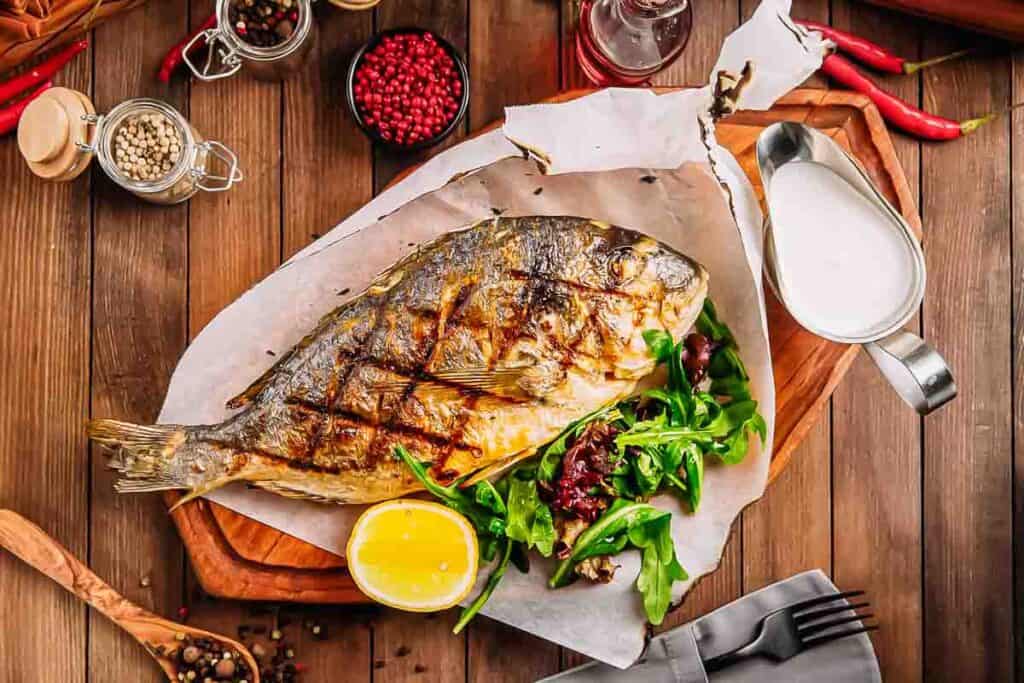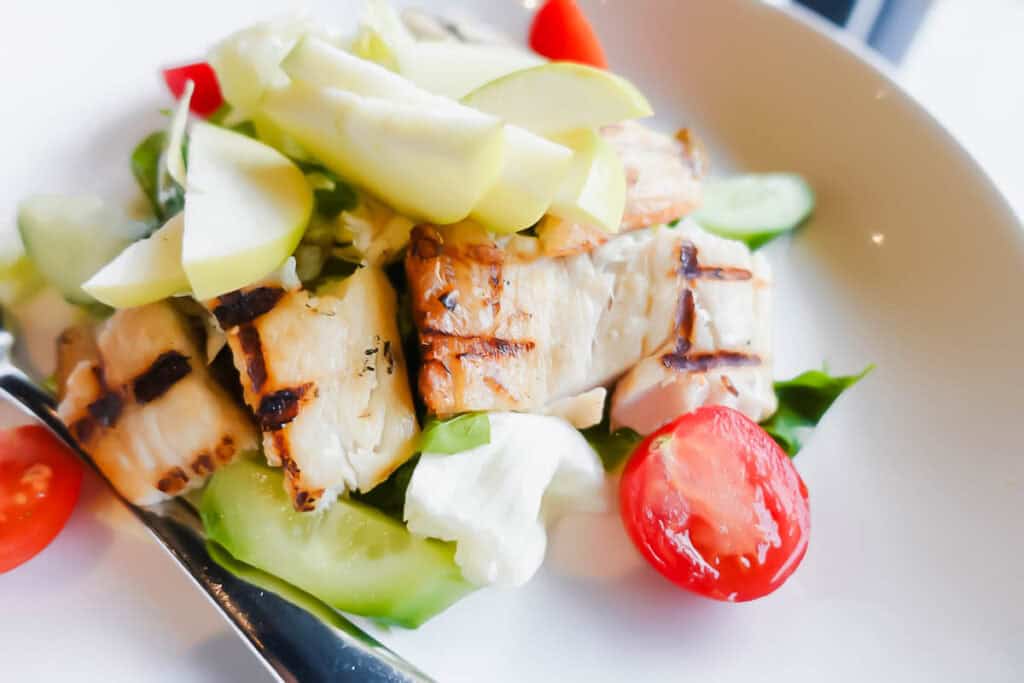Grilling is one of the easiest and simplest ways to cook most foods, and fish is no exception. This method, however, can be intimidating and stressful if you’re not experienced. Our guide will teach you everything you need to know about cooking your favorite fish on the grill so you can enjoy the smoky flavor without ruining its delicate texture.

Tips for the best grilled fish
Before you get cooking, there are a few tips that will make your fish grilling experience a smoother one. These shouldn’t be overlooked as it’s very easy for the cooking session to take a turn for the worse by skipping one of these simple steps.
Clean grates
Whether you’re using gas or charcoal, starting with clean grill grates are a must. Fish is delicate, and it can easily stick to the grill if the grates aren’t cleaned well beforehand. This may not matter as much if you’re grilling up a burger or steak, but for fish, it’s imperative to take a minute or two extra to scrape and brush the grates until sparkling clean.
Give it a good pre-heat
Another tip that prevents the fish from sticking to the grill is a generous amount of preheating time. Allow the grill to preheat for at least 10 to 15 minutes at a high temperature. This ensures the grates are piping hot so that when the raw fish hits the grill, it starts to sear immediately.
Invest in a fish spatula
If you’re serious about grilling fish, tongs won’t cut it. A wide metal fish spatula supports the entire surface area of the fish when flipping it so that there’s less chance of breaking the flesh. If you don’t have a fish spatula, using two spatulas together is a hack that can also work well.
Other accessories
Items like cedar planks, skewers and perforated grill pans are also useful depending on the type of fish you’re grilling. Cedar planks and perforated pans, in particular, allow for all the smoky goodness of the grill to infuse the fish without needing to cook it directly on the grill. Converting this baked wild sockeye salmon recipe to a grilling recipe in the summer is easy with the use of a cedar plank.
Even simpler options exist, too, like foil, which Jeré Cassidy of One Hot Oven uses to grill a half salmon with olive oil, butter, honey and lemon. It’s a 15-minute meal that she can just roll up the foil and toss out without any grill cleanup.

The best fish for grilling
Certain varieties of fish are more suited for grilling than others, but before you even decide on tuna or tilapia, there are categories of fish to consider.
- Whole fish
- Steak fish
- Filets of fish
Each category can be grilled, but the method will be slightly different. We’ll cover how to approach each one below.
How to grill whole fish
Cooking a fish whole can seem intimidating, but it will result in a beautiful presentation. Keeping the fish on the bone also allows it to stay moist and tender, much like any other cut of meat. The beauty of cooking a fish whole is that any type of fish can be cooked this way, even the extra delicate ones like sea bass or flounder.
Whole fish should be cleaned, scaled and gutted before grilling. While not necessary, stuffing the cavity of the fish with herbs and citrus is visually appealing and imparts a wonderfully subtle flavor to the grilled fish.
Season a whole fish generously with salt and pepper. Place it on a hot grill over a medium-heat direct flame towards the front edge of the grates — not in the middle. After letting the fish cook for about three minutes to sear, use a metal fish spatula to check if the fish easily releases from the grates. If not, leave it to cook for another minute or two. Otherwise, flip the fish over towards the center of the grill to finish cooking for an equal amount of time.
How to grill steak-cut fish
Swordfish, tuna, salmon and halibut are common types of fish that you might see cut into seafood steaks. Grilling this kind of fish is much like grilling any other kind of steak or chop.
Season the steak-cut fish generously with salt and pepper right before. Grill the fish over direct heat on your gas or charcoal grill until the desired level of doneness. The oily nature of these fish allows it to cook up nicely and release more easily from the grill when flipping, although a fish spatula is still recommended.

How to grill fileted fish
Fileted fish is the trickiest of the categories, and not all types of fish are suited to this method. You’ll want to choose a thicker fish type with firm flesh if you choose to grill it in filet form. Some good options include:
- Halibut
- Salmon
- Sablefish — also known as black cod
- Snapper
- Mahi mahi
- Grouper
- Monkfish
- Striped bass
- Trout
Common species that aren’t as well-suited for the grill when fileted are haddock, flounder, cod and sole. However, these varieties can still be grilled with the use of a perforated grill pan mentioned earlier.
If you’ve followed the tips and are using a clean, hot grill, cooking a filet of fish on the grill is completely manageable. If your piece of fish has the skin intact, place the fish skin side down to start.
The most important tip for grilling a fish filet is to cook it 75% of the way on one side rather than flipping it at the halfway point. Doing this ensures that when you flip the fish, it will easily release from the grates. Finish off the remaining 25% over direct high heat. Most fish filets need about seven to eight minutes total cooking time on a high-heat grill. Certain fish species can be cooked to a preferred level of doneness, like salmon, and the cooking time should be adjusted as such, whereas other fish, like monkfish or bass, should be fully cooked through.
Don’t be intimidated
With the proper information and methods in hand, there’s no reason to be intimidated by grilling fish. Those coveted grill marks don’t have to be limited to steaks and chops this season. You’ll love not having the entire house stink of seafood, the quick cooking time and the ease of using the grill this season.
Gina Matsoukas is the writer, photographer and recipe creator of Running to the Kitchen. Focusing on healthy, seasonal, whole-food recipes, her work has been featured in various online and print publications including Food Network, Prevention Magazine and Women’s Health. Gina lives in central New York, where she enjoys an active outdoor life.